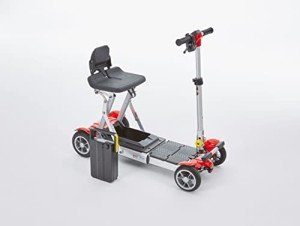A Brief History Of Mobility Aids In 10 Milestones
Understanding Mobility Aids: Enhancing Independence and Quality of Life
As society continues to age and people progressively look for methods to preserve independence, the demand for mobility aids has never been more relevant. Mobility aids, which include a variety of devices developed to help people with walking or walking around, play an important function in promoting mobility, enhancing safety, and enhancing total quality of life. This article will explore the various types of mobility aids, their benefits, considerations for choice, and answer some regularly asked questions.
Types of Mobility Aids
Different mobility aids are readily available, each created to deal with specific needs. The following table summarizes a few of the most typical types of mobility aids and their features.
Type of Mobility Aid
Description
Best Suited For
Key Features
Walking sticks
A handheld stick offering support and balance.
People who require very little assistance.
Light-weight, portable, adjustable height.
Walkers
Four-legged frames supplying stability.
Those needing considerable assistance while walking.
Foldable, some with wheels, included safety features.
Rollators
Wheeled walkers with a seat for resting.
People needing mobility with the choice to rest.
Brakes, baskets for individual products, adjustable height.
Wheelchairs
Chairs with wheels for individuals with limited mobility.
Those unable to stroll or needing extensive support.
Handbook or powered options, customizable seating.
Scooters
Motorized devices for larger ranges.
People with minimal endurance however needing independence.
Different sizes and designs, often portable.
Crutches
Assistance devices positioned under the arms or lower arms.
Individuals recovering from lower limb injuries.
Adjustable, lightweight, needs upper body strength.
Stairlifts
Mechanical devices for moving in between floorings.
Users dealing with challenges in multi-level homes.
Personalized for different staircases, automated.
Advantages of Mobility Aids
Mobility aids supply a variety of advantages that can significantly boost the lives of people facing mobility difficulties. Some notable advantages include:
Increased Independence: Mobility aids empower people to move freely without counting on others for support, thus enhancing their confidence and self-confidence.
Enhanced Safety: Using mobility aids can reduce the threat of falls and injuries, specifically for older adults or those with balance issues.
Enhanced Quality of Life: By facilitating mobility, individuals can take part in social activities, participate in events, and enjoy life more totally, contributing to much better emotional and psychological health.
Rehab Support: After surgery or injury, mobility aids supply needed support and stability, helping in recovery and rehabilitation processes.
Ease of access: Many mobility aids are developed to be utilized both indoors and outdoors, guaranteeing that people can browse various environments with ease.
Elements to Consider When Choosing Mobility Aids
Selecting the proper mobility aid needs cautious consideration of numerous aspects, including:
Factor
Factors to consider
User's Needs
Examine the level of mobility needed; think about whether the user needs short-term or long-term help.
Physical Limitations
Examine the user's strength, balance, and coordination to figure out the best type of help.
Setting
Consider the main environments where the aid will be utilized, such as home, outdoors, or particular terrains.
Weight and Portability
Make sure that the selected device is workable regarding transportability and storage, particularly for outdoor use.
Spending plan
Mobility aids been available in a variety of rates; consider insurance coverage and offered funding options.
Adjustability
Choose aids that can be adjusted for height and convenience to accommodate development or changing requirements.
Regularly Asked Questions About Mobility Aids
1. How do I understand if I need a mobility help?
Lots of aspects can indicate the need for a mobility help, such as trouble strolling or balancing, tiredness while standing, or a recent surgical treatment affecting mobility. Consulting with a healthcare expert can offer guidance customized to individual requirements.
2. What types of mobility aids are covered by insurance coverage?
Protection differs in between insurance companies, but a lot of provide alternatives for long lasting medical equipment, which generally consists of wheelchairs, walkers, and some types of canes. Consult your insurance coverage provider for specific protection information.
3. Can mobility aids be used outdoors?
Yes, many modern-day mobility aids are developed for outdoor use. Rollators, scooters, and some walkers are geared up with functions for stability and ease of use on various terrain.
4. How do I preserve my mobility aid?
Routine upkeep involves inspecting for any wear and tear, guaranteeing that parts such as wheels, brakes, and frames are operating correctly, and cleaning the devices as required. Following the producer's guidelines is essential for safety.
5. Is there a risk of ending up being depending on mobility aids?
While some users may become reliant on mobility aids, they are developed to promote independence and mobility. Gradually using carleyherbold.top can boost self-confidence and assistance retain physical strength and coordination.
Mobility aids are important tools that empower people to conquer physical challenges, promoting independence and boosting lifestyle. By understanding the various kinds of mobility aids available, their advantages, and essential factors for factor to consider, households and caregivers can make informed decisions that best satisfy the needs of their loved ones. With the best support, those with mobility obstacles can lead fulfilling and active lives, totally free to check out the world around them.
